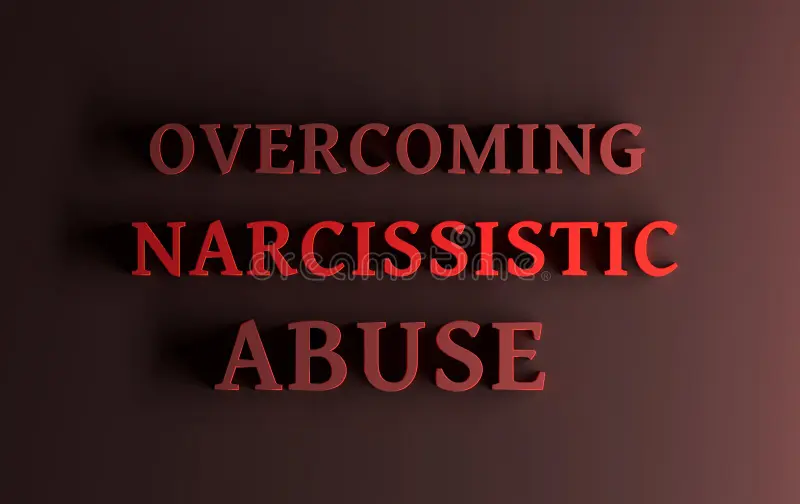Narcissistic abuse is a term often used to describe the emotional and psychological manipulation inflicted by someone with narcissistic tendencies. While the word “narcissism” might bring to mind someone who is simply vain or self-absorbed, the reality of living with or being in a relationship with a narcissist is far more damaging and complex. Victims of narcissistic abuse often endure emotional turmoil, confusion, and a deep sense of loss, but there is hope. By understanding the dynamics of narcissistic abuse and taking steps toward healing, you can reclaim your life.
What is Narcissistic Abuse?
At its core, narcissistic abuse refers to the manipulative tactics used by individuals with narcissistic traits to control and dominate others. Narcissists often have an inflated sense of self-importance, a deep need for admiration, and a lack of empathy for others. These individuals seek to maintain power over their victims through emotional manipulation, criticism, and even gaslighting—a form of psychological manipulation that makes the victim question their reality.
Narcissistic abuse can occur in various types of relationships, including romantic partnerships, friendships, family dynamics, and even in the workplace. The abuse is often subtle at first, making it hard for the victim to recognize what’s happening.
Signs of Narcissistic Abuse
Recognizing the signs of narcissistic abuse is the first step in breaking free from its toxic grip. Here are some common indicators:
- Gaslighting: The abuser makes the victim question their own memory, perceptions, or reality. For example, they may deny things they said or did, leaving the victim feeling confused and unsure.
- Blame-shifting: Narcissists rarely take responsibility for their actions. Instead, they blame others, including the victim, for their problems or mistakes.
- Emotional manipulation: Narcissists use guilt, shame, and fear to control their victims. They might belittle, criticize, or undermine the victim to maintain power.
- Isolation: The abuser may attempt to isolate the victim from friends and family to increase their dependency on the narcissist.
- Love-bombing: At the start of the relationship, narcissists often overwhelm the victim with affection and attention. However, this behavior quickly fades once they have gained control.
The Cycle of Narcissistic Abuse
Narcissistic abuse typically follows a predictable cycle, which makes it difficult for victims to break free. Understanding this cycle is crucial for recognizing patterns and taking steps toward recovery.
- Idealization: In this phase, the narcissist puts the victim on a pedestal. They shower the victim with love, praise, and affection, making them feel special and valued.
- Devaluation: Once the narcissist feels secure in the relationship, they begin to criticize, belittle, and manipulate the victim. The victim often feels confused and may blame themselves for the change in behavior.
- Discard: In some cases, the narcissist may abruptly end the relationship, leaving the victim feeling abandoned and worthless.
- Hoovering: After discarding the victim, the narcissist may try to re-enter their life through charm, promises of change, or manipulation. This keeps the victim trapped in a cycle of hope and disappointment.
Effects of Narcissistic Abuse on Mental Health
The impact of narcissistic abuse on a victim’s mental health can be profound. Many victims experience symptoms of anxiety, depression, and post-traumatic stress disorder (PTSD) due to the constant manipulation and emotional turmoil.
Common Mental Health Effects Include:
- Low self-esteem: Victims of narcissistic abuse often feel worthless and incapable due to the relentless criticism and blame.
- Anxiety: Living in an unpredictable and unstable environment can lead to chronic anxiety. Victims may feel constantly on edge, unsure of when the next verbal attack or emotional manipulation will occur.
- Depression: The isolation, manipulation, and emotional abuse can leave victims feeling hopeless and trapped, leading to severe depression.
- PTSD: Many victims develop PTSD due to the trauma of narcissistic abuse. They may experience flashbacks, nightmares, and hypervigilance, even after leaving the abusive relationship.
How to Break Free from Narcissistic Abuse
Breaking free from narcissistic abuse can feel overwhelming, especially when the victim has been manipulated into believing they are at fault. However, recovery is possible with the right support and resources. Here are some steps to take:
1. Recognize the Abuse
The first step is acknowledging that you are in an abusive relationship. Denial often keeps victims stuck, but once you recognize the signs of narcissistic abuse, you can start taking action to protect yourself.
2. Set Boundaries
Narcissists thrive on violating boundaries. Setting firm, clear boundaries is essential for protecting your mental health. These boundaries might include limiting contact, refusing to engage in arguments, or ending the relationship altogether.
3. Seek Professional Help
Therapy can be incredibly helpful for victims of narcissistic abuse. A therapist can help you process the trauma, rebuild your self-esteem, and develop coping strategies to heal from the emotional wounds.
4. Build a Support Network
Isolation is a common tactic used by narcissists to control their victims. Reconnect with friends, family, or support groups who can provide emotional support and encouragement during your healing journey.
5. Practice Self-Care
Healing from narcissistic abuse requires a lot of emotional energy, so it’s important to prioritize self-care. Engage in activities that bring you joy, relaxation, and a sense of peace. This might include journaling, meditation, exercise, or creative hobbies.
The Importance of No Contact
One of the most effective strategies for healing from narcissistic abuse is implementing a “no contact” rule. This means cutting off all forms of communication with the narcissist, whether through phone calls, texts, emails, or social media. While this may seem difficult, it is crucial for regaining control over your life and preventing further manipulation.
Why No Contact Works:
- Reduces manipulation: Narcissists will often use any form of contact to try and regain control over the victim. No contact eliminates this possibility.
- Allows healing: Without the constant emotional turmoil of interacting with the narcissist, victims can focus on their own healing and recovery.
- Creates emotional distance: By cutting off communication, victims can begin to see the relationship more objectively and recognize the patterns of abuse.
Table: Comparing Healthy Relationships vs. Narcissistic Abuse
| Aspect | Healthy Relationship | Narcissistic Abuse |
|---|---|---|
| Communication | Open and honest | Manipulative and one-sided |
| Empathy | Mutual understanding | Lack of empathy or concern |
| Emotional Stability | Supportive and predictable | Unstable and emotionally draining |
| Boundaries | Respected and valued | Constantly violated |
| Accountability | Shared responsibility | Blame-shifting and denial |
How to Heal from Narcissistic Abuse
Recovering from narcissistic abuse is a journey, but it’s one you don’t have to take alone. Here are some tips for moving forward:
1. Rebuild Your Self-Esteem
Victims often struggle with low self-worth after being subjected to constant criticism and blame. Engage in activities that help you rediscover your strengths, talents, and value.
2. Learn About Narcissistic Abuse
Educating yourself about narcissistic personality traits and their impact can help you make sense of your experience. Knowledge is empowering and can provide clarity as you work through the healing process.
3. Develop Healthy Relationships
After experiencing narcissistic abuse, it’s important to surround yourself with people who respect, support, and uplift you. Building healthy relationships based on mutual trust and respect is essential for your long-term emotional health.
4. Focus on Personal Growth
While healing from narcissistic abuse can be difficult, it also provides an opportunity for personal growth. Use this time to set new goals, pursue hobbies, or learn new skills. Reclaiming your life and your independence is a powerful step forward.
Conclusion: There is Hope After Narcissistic Abuse
Narcissistic abuse can leave lasting emotional scars, but recovery is possible with the right tools and support. By recognizing the signs of abuse, setting boundaries, and focusing on healing, you can break free from the toxic cycle and regain control over your life. Remember, you deserve to be in relationships that are based on respect, empathy, and mutual support.
In the journey to healing, know that you are not alone. Many have overcome the devastation of narcissistic abuse and gone on to lead fulfilling, joyful lives. With time, patience, and the right resources, you too can break free and find the peace you deserve.





